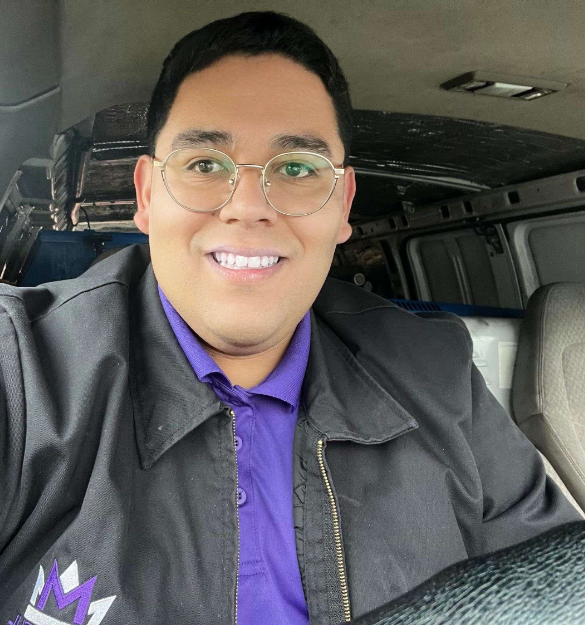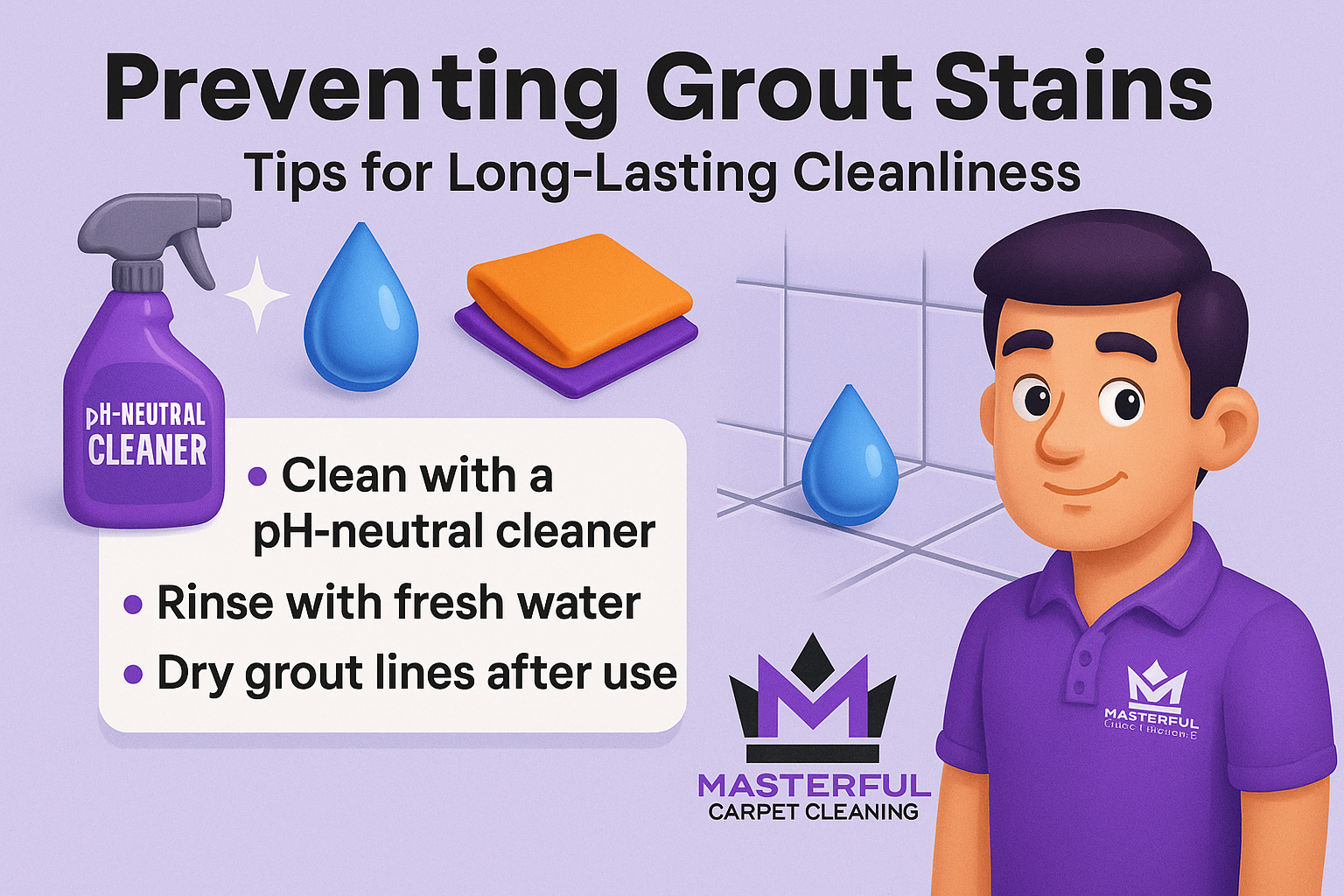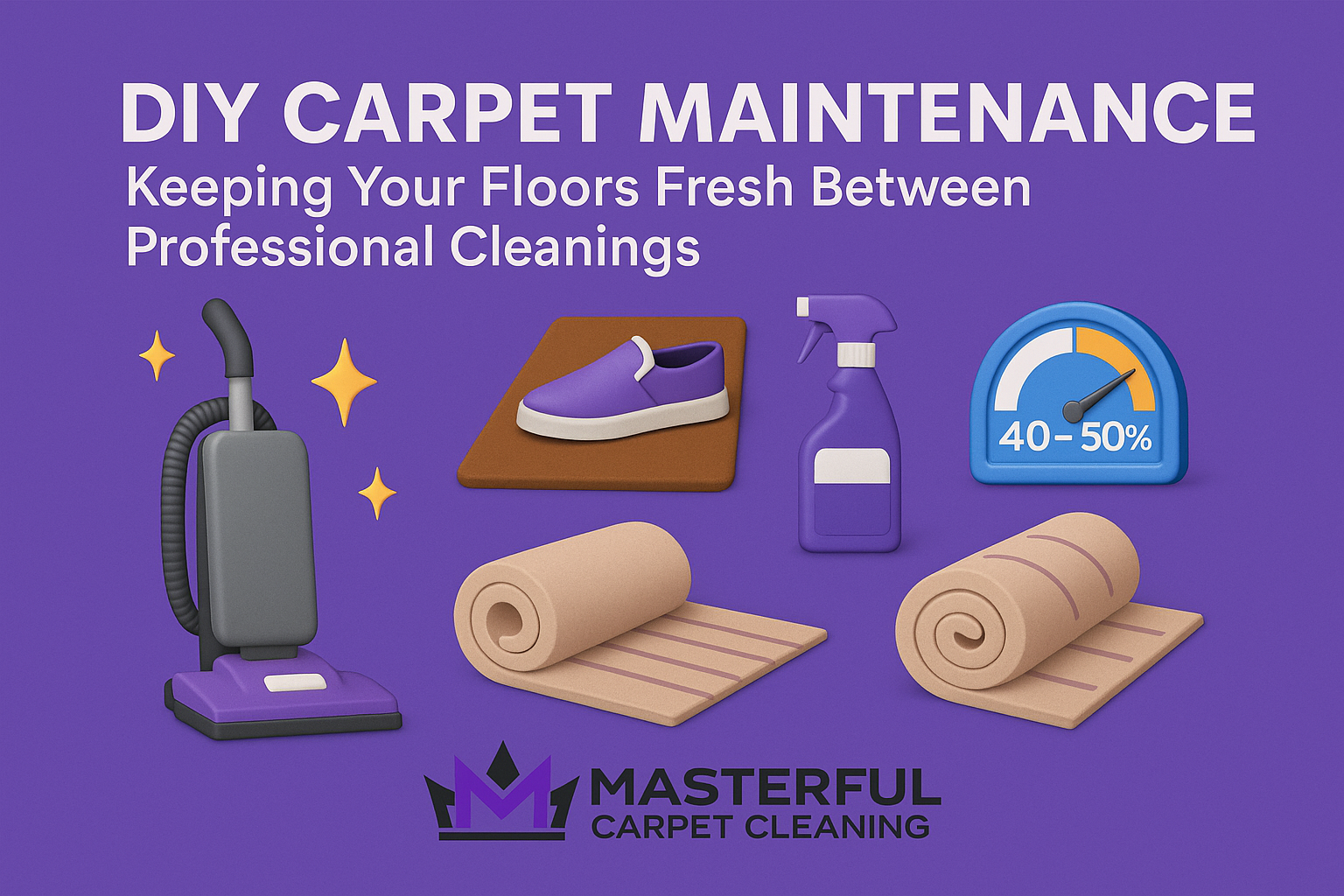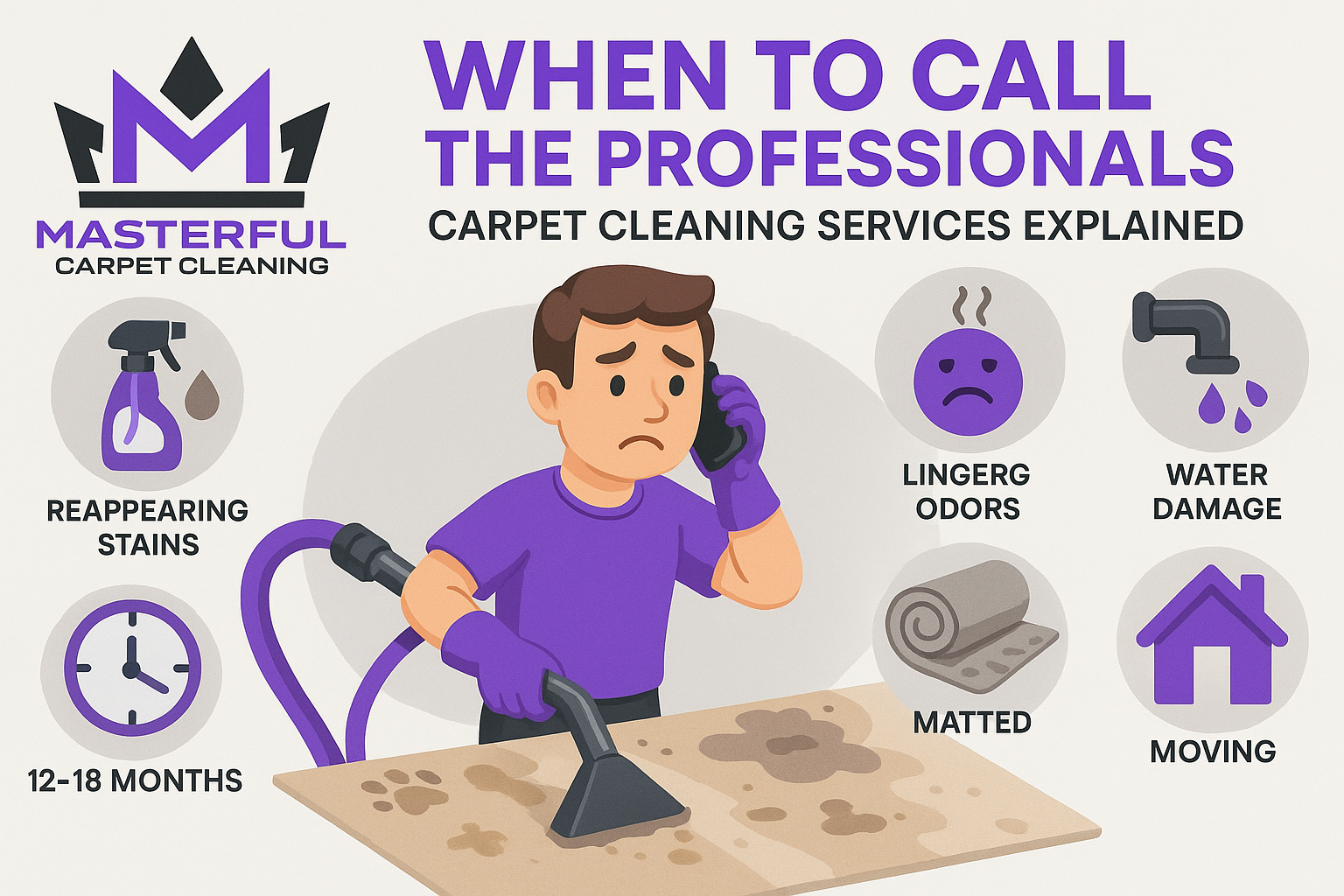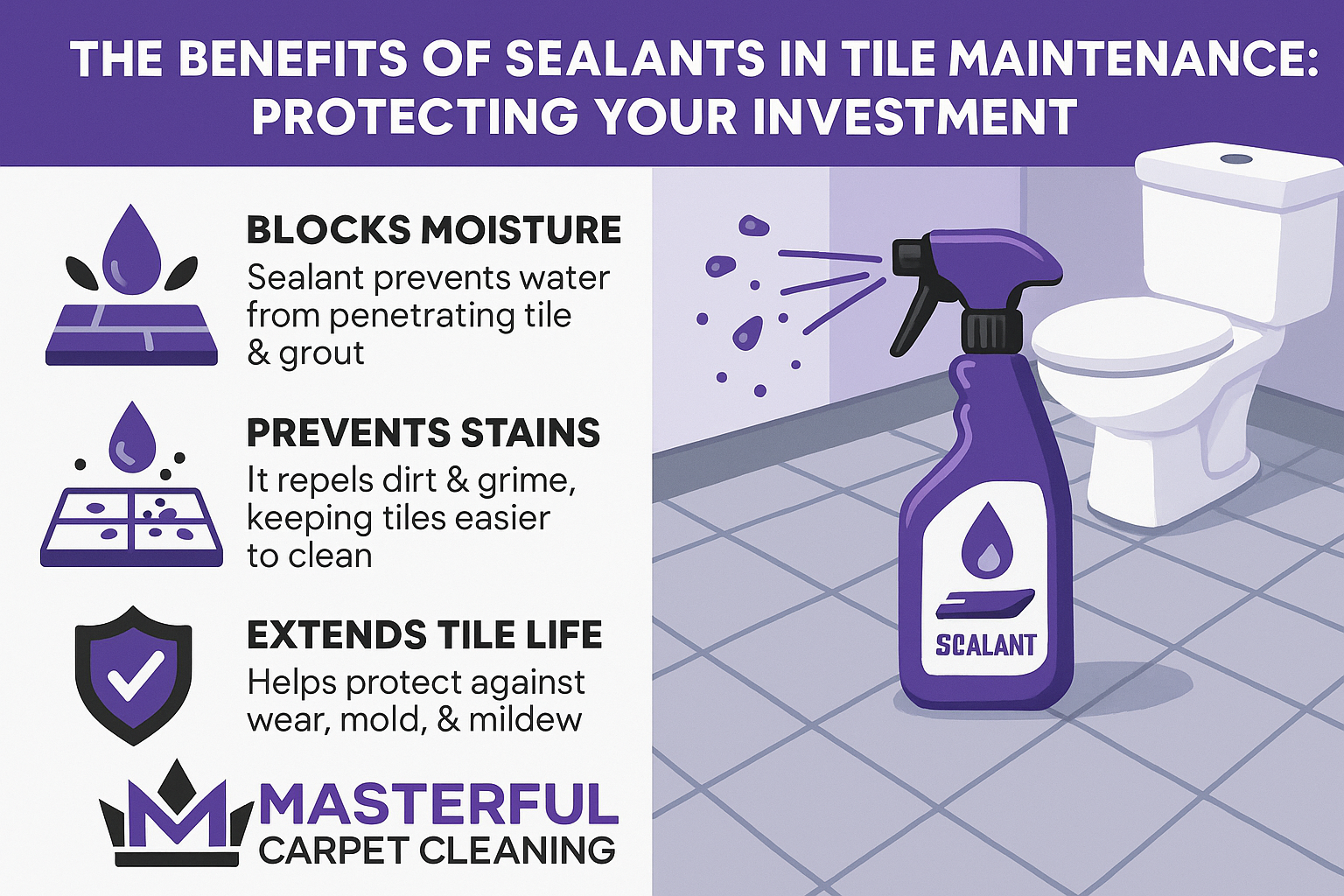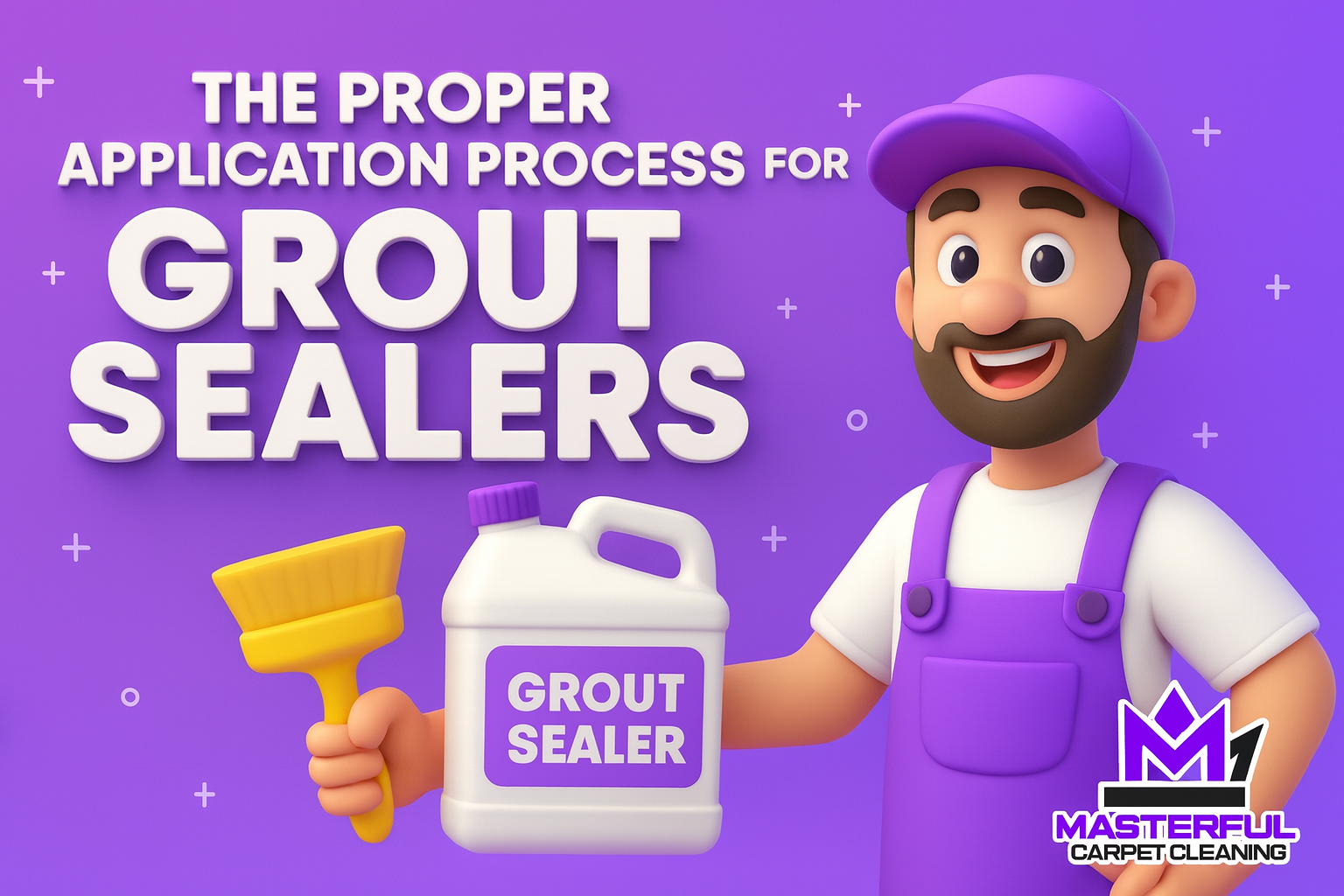Professional Stain Removal Services – When DIY Isn’t Enough
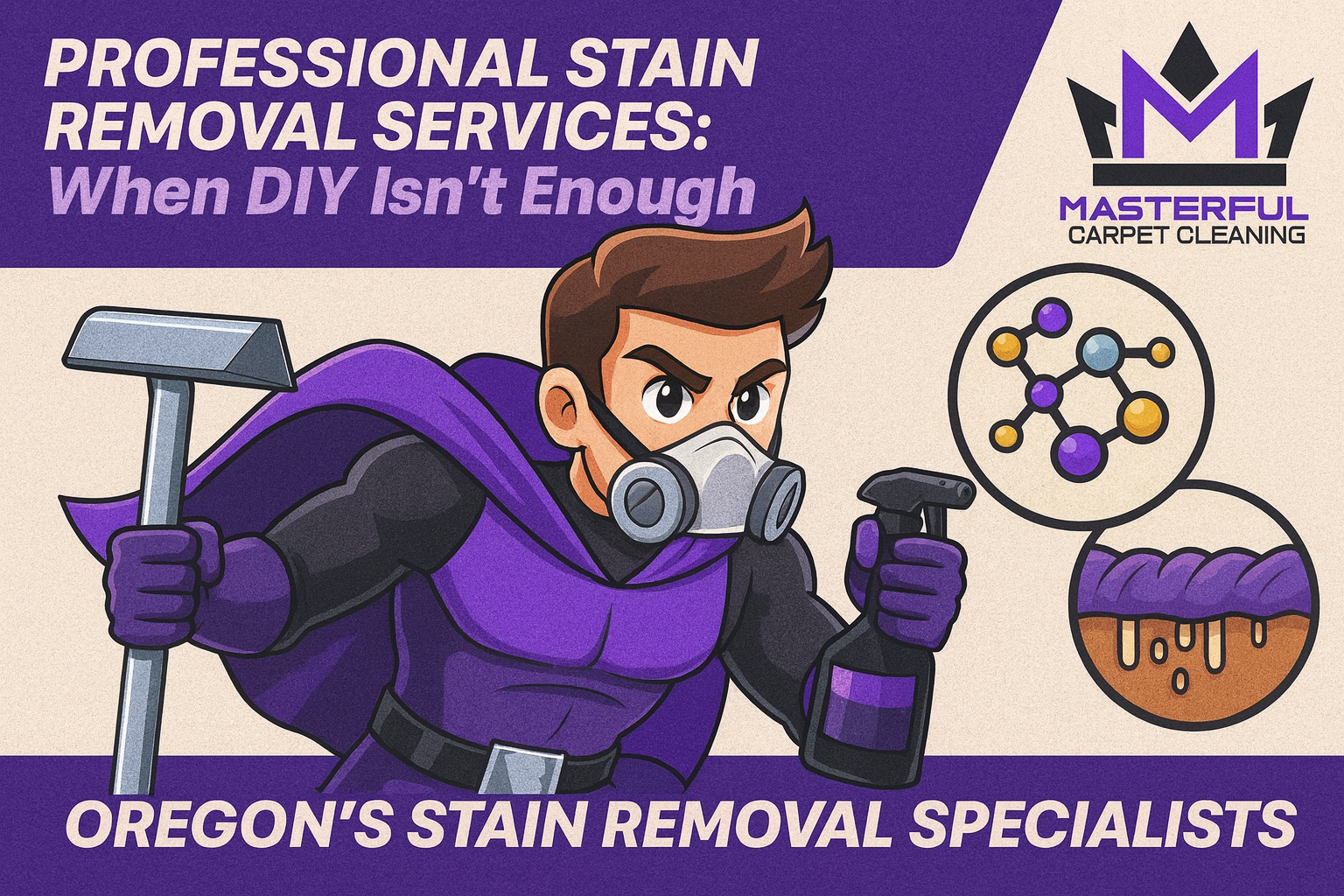
Some spills vanish with a quick blot. Others laugh at your cleaner, fade for a day, then creep back as a dingy ring. The difference isn’t luck, it’s chemistry, fiber type, and whether the stain was removed or just pushed deeper. This guide explains how Masterful Carpet Cleaning serves Oregon homes when you need results, not experiments.
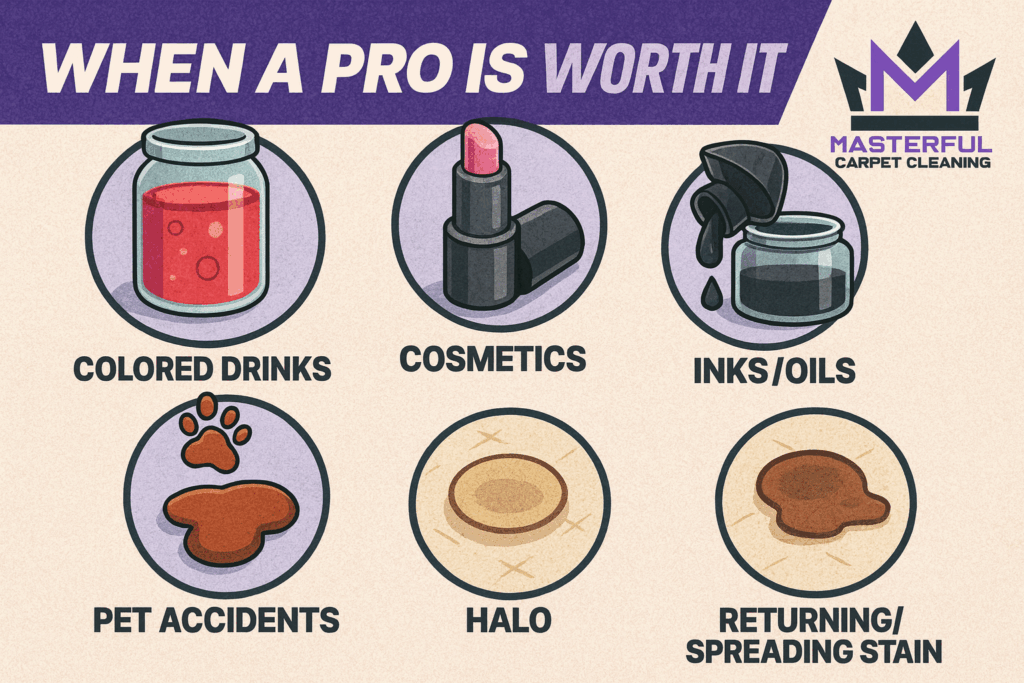
The short version: when a pro is worth it
- Colored drinks (reds, blues, purples), cosmetics, inks, oils, rust, pet accidents with odor, or any spot you’ve already “treated” twice without success.
- Old stains that look lighter/darker than the carpet or have a halo.
- Anything that returns after drying (wicking) or smells worse when the weather gets humid.
If that sounds like your situation, you’re in professional territory. Here’s why, and how we solve it for Oregon homeowners.
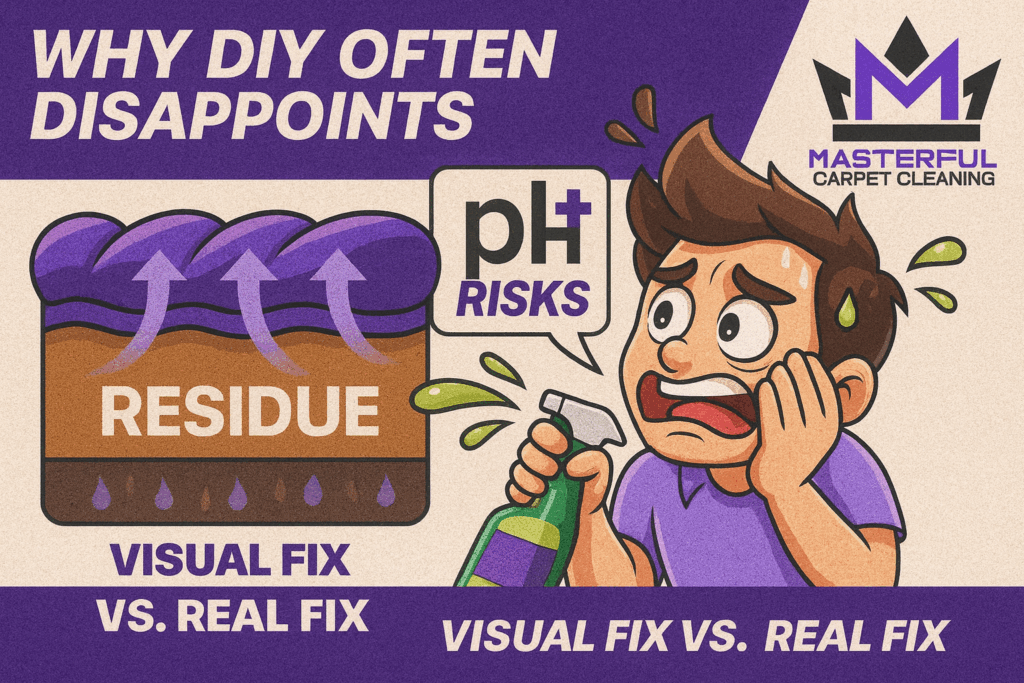
Why DIY often disappoints
Store bought spotters are built to make a fast visual change. They’re strong detergents (sometimes with oxidizers and fragrance) that brighten the surface. Two problems follow: residue and wicking. Residue attracts new soil; wicking pulls buried contamination back to the face yarns as the surface dries. Add the risk of dye loss (bleaching) when the chemistry is too aggressive or the pH is wrong, and yesterday’s “improvement” becomes today’s permanent blemish.
Professionals approach stains like a mini lab test: identify fiber, classify the contaminant, choose chemistry that targets the stain, but protects the dye, control dwell time and heat, then extract completely so nothing’s left to rise later.
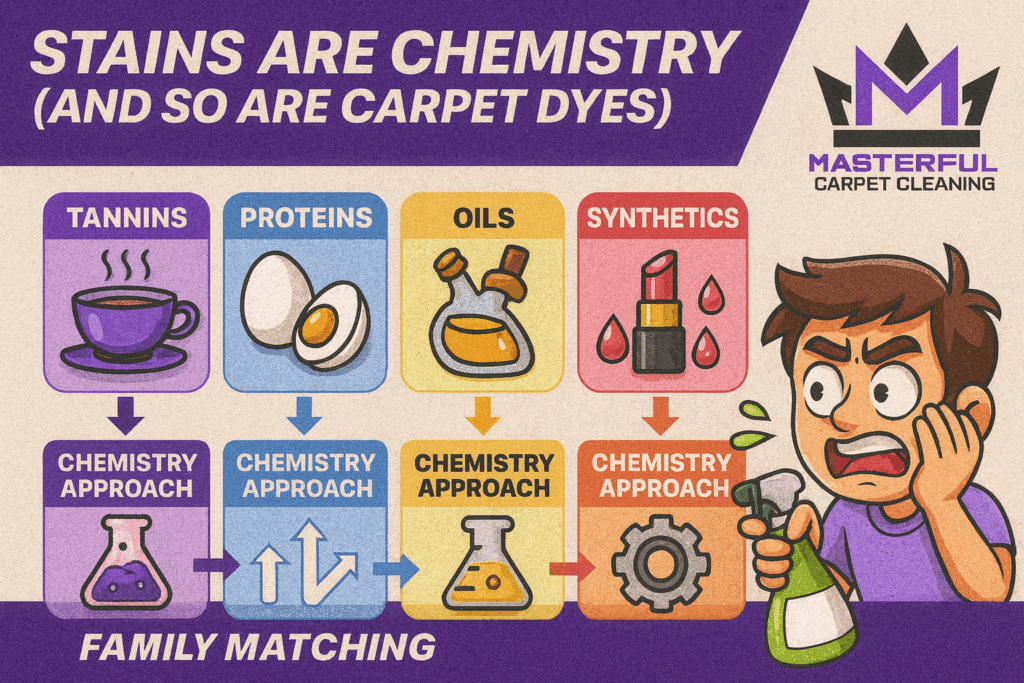
Stains are chemistry (and so are carpet dyes)
Coffee and tea carry tannins; pet accidents start acidic and age alkaline; oils are hydrophobic; synthetic beverages and lipstick rely on dye molecules that cling to the same sites your carpet dye uses. Treating all of those with one bottle is like repairing every appliance with a single screwdriver.
What we do instead is match the fix to the family:
- Tannins (coffee, tea, wine, leaves): controlled acids or reducers; managed heat; thorough rinse.
- Proteins (milk, egg, blood, vomit, fresh urine): enzyme digesters plus gentle alkalinity; careful temperature.
- Oils (cooking oil, motor oil, cosmetics): solvent boosters and emulsifiers; low moisture; targeted agitation.
- Synthetic dyes (sports drinks, Kool-Aid, lipstick): heat transfer spotting with dye release agents; strict timing.
- Rust/metal transfer: specialty acidic treatments; fast neutralization to protect fibers.
That alignment, stain family → safe chemistry → controlled process, is the difference between “lighter” and “gone.”
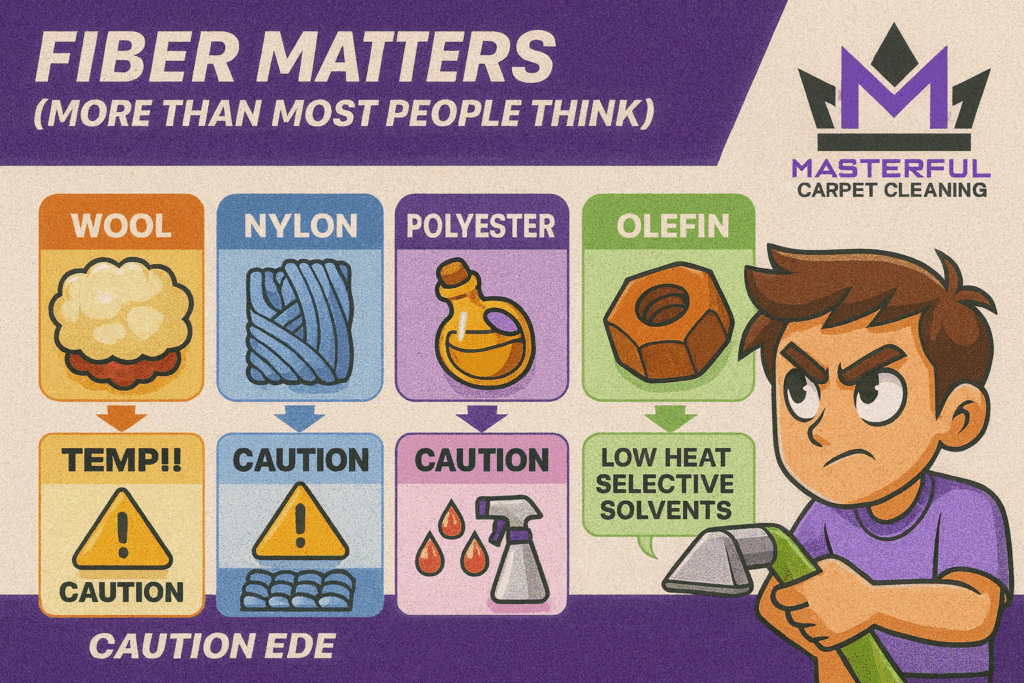
Fiber matters more than most people think
Wool, nylon, polyester (PET), and olefin (polypropylene) look similar from five feet away, but they behave differently under stress.
- Wool wants slightly acidic chemistry and moderate heat. Go too hot or too alkaline and you dull the fiber’s natural scales.
- Nylon tolerates a wide range of treatments but can be stained by acid dyes; red dye work requires finesse.
- Polyester (PET) shrugs off many water based stains but clings to oils, so solvent forward spotting and a clean rinse are key.
- Olefin (PP) resists many dyes yet loves petroleum residues; low heat and selective solvents keep distortion away.
A quick fiber test at the start prevents the “right chemical, wrong carpet” mistake that causes color loss and texture change.
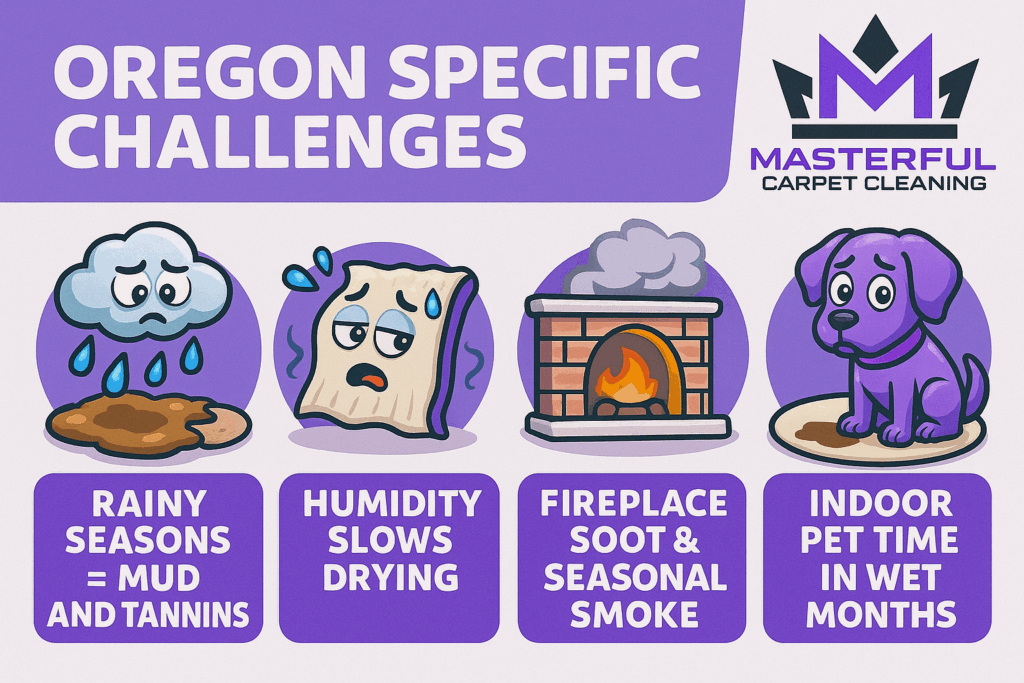
Oregon specific challenges (we plan for these)
- Rainy seasons = mud and tannins. Entryways and runners get hit with organic acids from leaves and soil.
- Humidity slows drying. Without airflow and pH control, browning can sneak in along edges.
- Fireplace soot & seasonal smoke. Ultrafine particles settle deep in the pile, then ghost back after basic cleaning.
- Indoor pet time in wet months. Odor and dye damage require sub-surface treatment, not perfume.
We tune process, moisture, and airflow to the climate here, because Portland is not Phoenix.
What a professional visit looks like (start to finish)
- Inspection & fiber ID. We confirm construction (wool vs. synthetic), check for prior color loss, and map hidden contamination with UV when pets or odors are in play.
- Stain classification & spot test. Unknowns are tested with the least aggressive option first.
- Dry soil removal. Thorough vacuuming and pile lifting so grit doesn’t scratch during treatment.
- Targeted pre-treatments. Enzymes for proteins, reducers for tannins/browning, solvent boosters for oils, dye release chemistry for reds.
- Measured agitation & dwell. Gentle tools move solutions to the base of the fiber; dwell is timed, not guessed.
- Rinse extraction or sub-surface flush. Controlled heat/pressure pulls soils and chemistry out; deep problems get pad-level extraction.
- Neutralize & groom. We normalize pH and set the pile to dry evenly, this is your anti-wicking insurance.
- Speed drying & final check. Air movers accelerate evaporation (especially on damp days); we verify from multiple angles under real-room light.
That sequence protects color, texture, and backing while solving the stain at its full depth.
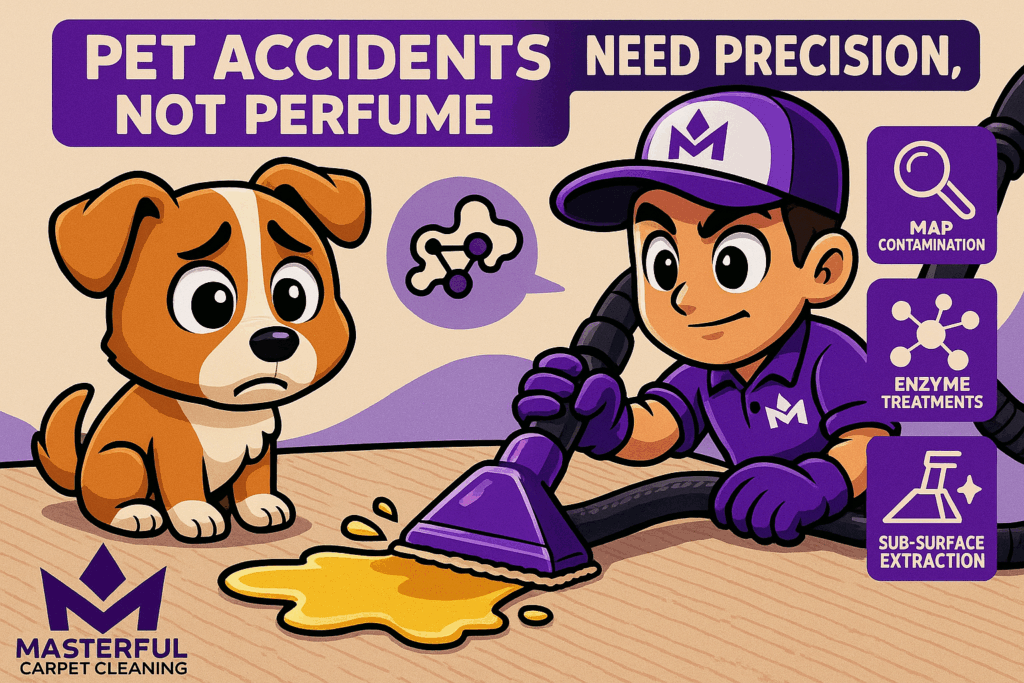
Pet accidents need precision, not perfume
Urine morphs as it ages, and the uric salts it leaves can re-odorize whenever humidity jumps. Treating only the face yarn is why smells “come back.” Our approach:
- Map the full contamination with UV (fiber, backing, pad).
- Pair enzyme systems with fiber-safe oxidation to correct discoloration.
- Use sub-surface extraction when the pad is involved.
- Finish with true odor neutralizers (no heavy fragrances) and a pH-balanced rinse.
If dye is damaged, we’ll talk options like spot dyeing or a small bonded insert, honest expectations, before we start.
“Permanent” defined – and your Plan B
A stain is permanent when safe chemistry can’t remove it without also removing carpet dye, when heat has distorted the pile, or when backing damage has occurred. You still have choices:
- Color repair (spot dyeing): blends small bleach-outs back into the field color.
- Bonded insert: replaces a ruined patch with donor carpet (often from a closet) for an invisible repair.
- Practical design fixes: shifting furniture to break up a traffic lane can be smarter than a full replacement.
- Replacement guidance: if that’s the sensible call, we’ll say so and set you up for better stain resistance next time.
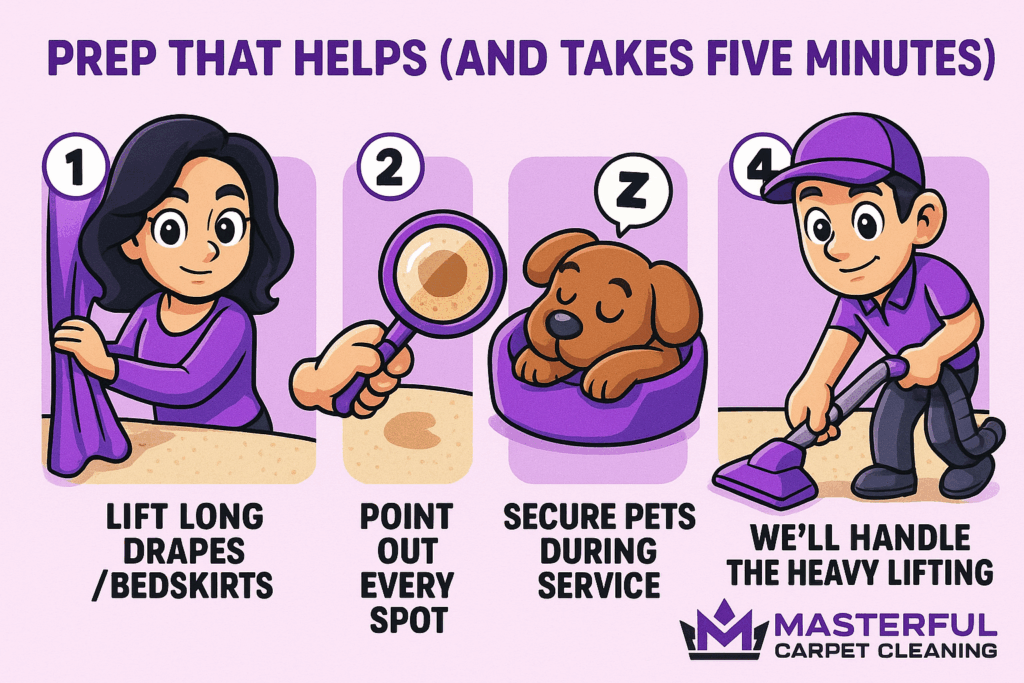
Prep that helps (and takes five minutes)
- Lift long drapes/bedskirts off the floor; move small, fragile items from the work zone.
- Point out every spot, even faint shadows, and tell us what products you tried.
- Secure pets during service and until areas are dry to the touch.
We’ll handle the heavy lifting, including dry-soil removal.
What to expect after treatment
Properly treated areas dry within hours; Oregon humidity can stretch that slightly, which is why we bring airflow. The cleaned zone should feel soft (no crunchy residue), look even with surrounding carpet, and smell like nothing at all. If wicking risk exists because contamination reached the pad, we’ll say so up front and deploy sub-surface tools and air movers to stop it before it starts.
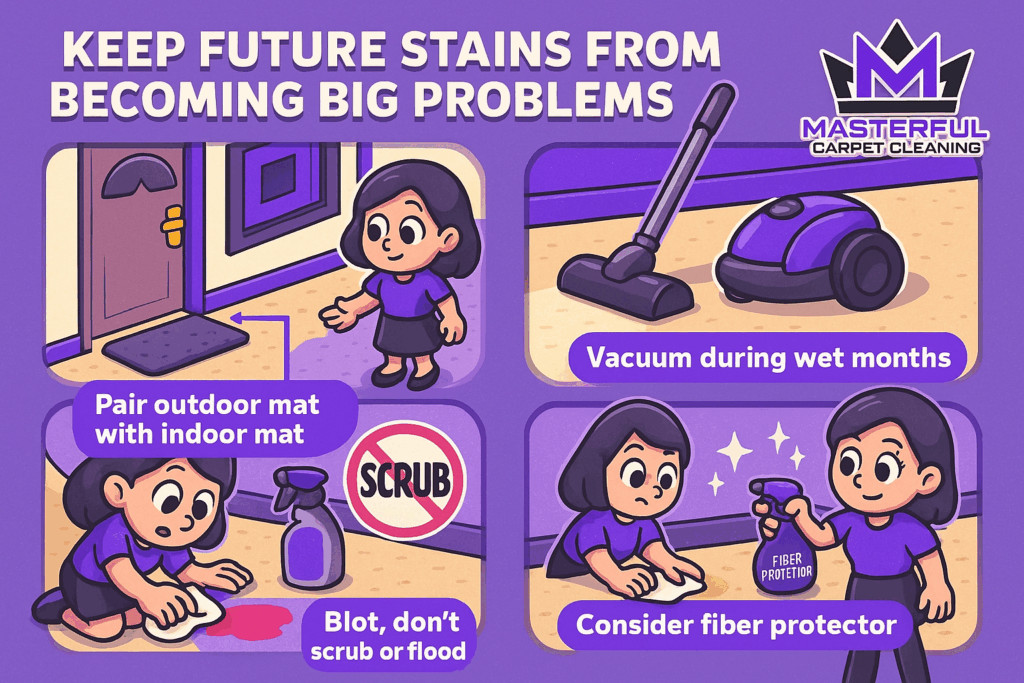
Keep future stains from becoming big problems
- Pair a coarse outdoor mat with an absorbent indoor mat at every busy entry.
- Vacuum more during wet months to remove fine grit that accelerates wear.
- When accidents happen, blot, don’t scrub, and don’t flood the area.
- After using a store spotter, follow with a light clear water rinse and another blot to remove residues.
- Consider fiber protector after professional cleaning; it buys the precious time you need to blot spills before they set.
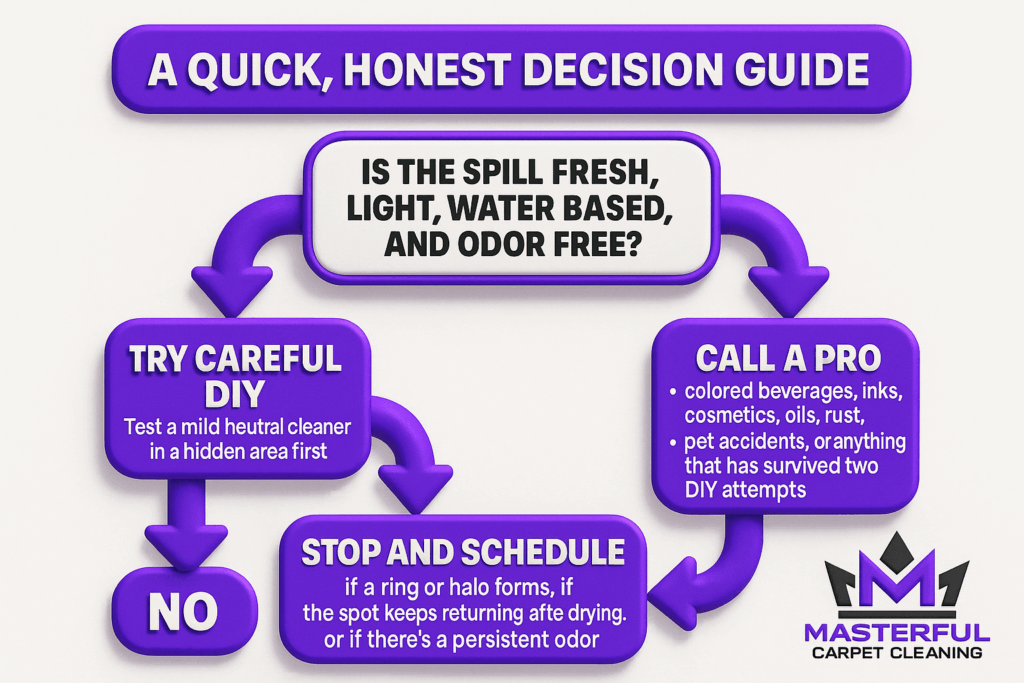
A quick, honest decision guide
- Try careful DIY if the spill is fresh, light, water based, and odor free. Test a mild neutral cleaner in a hidden area first.
- Call a pro for colored beverages, inks, cosmetics, oils, rust, pet accidents, or anything that has survived two DIY attempts.
- Stop and schedule if a ring or halo forms, if the spot keeps returning after drying, or if there’s a persistent odor.
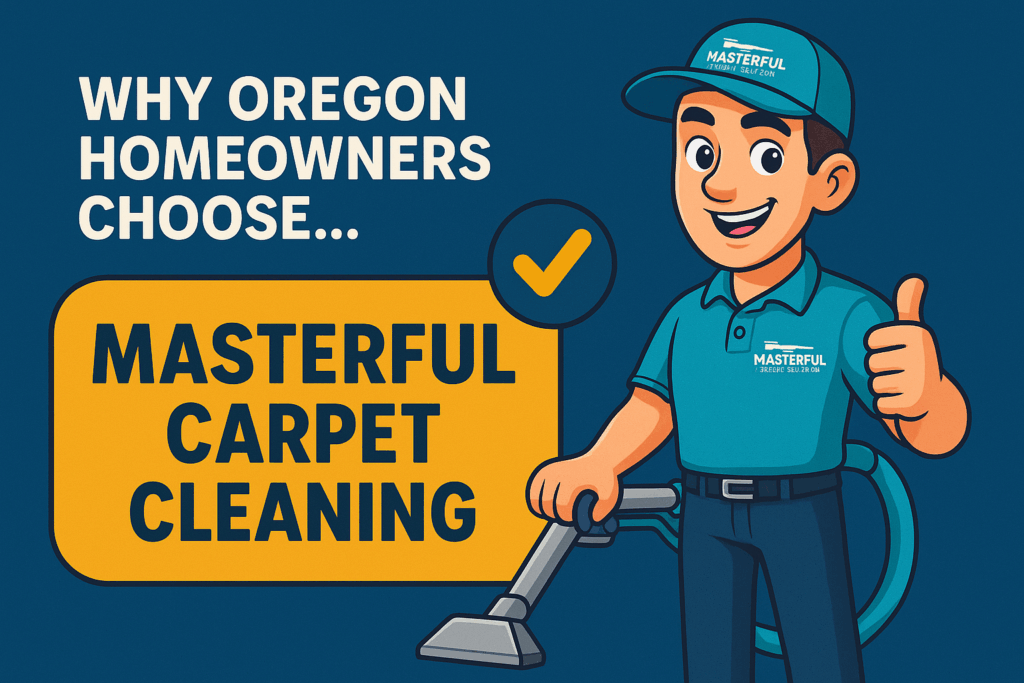
Why Oregon homeowners choose Masterful Carpet Cleaning
Results, not routines. We build each visit around your specific stains and traffic patterns, not a generic checklist. Fiber safety comes first, wool remains wool-safe; nylon gets the right red-dye protocol; polyester’s oil affinity is handled with solvent forward chemistry and a clean rinse; olefin receives low heat, selective solvents. And because we work across Oregon every week, we plan for rain driven soils, leaf tannins, fireplace soot, and late summer smoke particulates that other markets barely see.
You’ll notice the difference in our communication. We set expectations before we start, show you the “why” behind what’s possible, and offer Plan B (color repair, bonded insert) if that’s the smarter use of your budget. Our goal isn’t just a cleaner spot today; it’s a carpet that stays clean next week and next season.
FAQs (straight to the point)
- Will you always get the stain out? Most of the time, yes, when the dye is intact. If dye is gone or heat damage exists, we’ll move to repair options.
- Is it safe for kids and pets? Yes. We use fiber appropriate chemistry and rinse thoroughly; once dry, the surface is neutral.
- Do you have to clean the whole room? Not always. Isolated stains can be treated locally; traffic lanes or residue histories may benefit from a broader clean.
- How long does it take to dry? Typically a few hours; airflow shortens that even on damp days.
- Do you handle rugs and upholstery? Absolutely, after fiber testing (especially for wool, viscose, or blends).
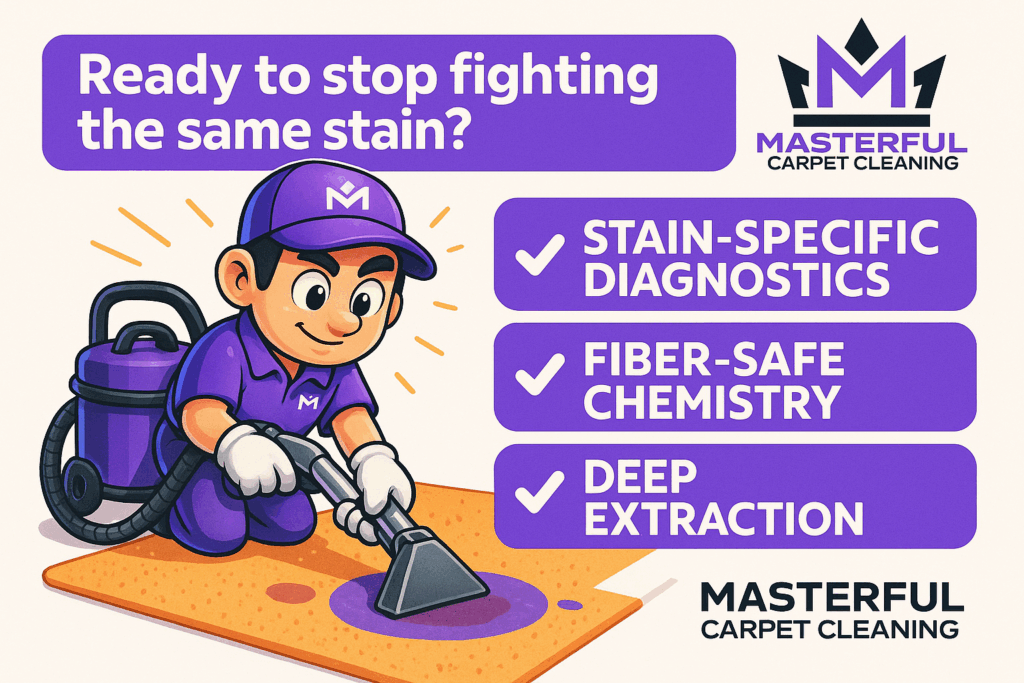
Ready to stop fighting the same stain?
When DIY isn’t enough, precision is. Masterful Carpet Cleaning brings stain specific diagnostics, fiber safe chemistry, and deep extraction to homes across Oregon, so the spot disappears and stays gone.
Schedule your professional stain evaluation: Masterful Carpet Cleaning – Oregon’s stain removal specialists.
As the Co-Owner of Masterful, Randy has been providing quality cleaning services to the Salem and Portland areas of Oregon for many years. He has built a reputation for excellence in the industry. His team take prides in using the latest cleaning techniques and technologies to deliver exceptional results every time. Author
